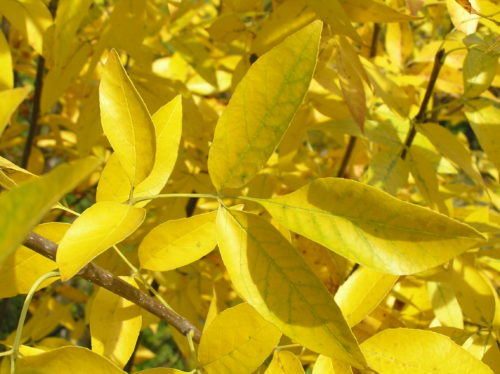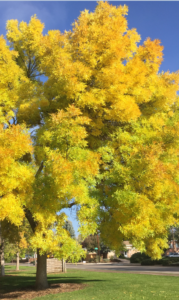
Ode To Ash
Update: December 13, 2018 Ilene Flax was interviewed on the “Cultivating Place” podcast Click Here to listen and learn more. Ode To Ash By Ilene Flax Trees aren’t at home in Boulder. The only natives here are cottonwoods and willows in…
Update: December 13, 2018
Ilene Flax was interviewed on the “Cultivating Place” podcast Click Here to listen and learn more.
Ode To Ash
By Ilene Flax
Trees aren’t at home in Boulder. The only natives here are cottonwoods and willows in wet spots and conifers creeping down from the foothills. The others were planted to create our irrigated garden of a City. Between late and early frosts, chinook winds, and drought, the weather has it in for the trees.
Ash trees are a special breed. Though they wouldn’t be here without human support, they have escaped cultivation, volunteering to live where our cup overflows. They do this by leafing out late, dropping leaves early, bending and losing a limb or two in the wind, creating an abundance of seed. But they’re not so well-adapted that we consider them weeds.
Most trees in our midst start their lives in nurseries, grafted and balled from inception. Peter Wohlleben’s “The Hidden Life of Trees” clarifies the distinctive quality of trees that live alongside their offspring. Interconnected by roots and mycorrhizae, these trees have lifelong relationships. The elders discipline the youth by limiting access to resources to ensure slow, solid growth, and the offspring support their parents in their decline. Being volunteers means that the ashes live in a community of trees that are communicating with one another.
This is part of why the four green ashes in my backyard are beloved. Also, for shade and habitat. Also, because they are so beautiful in the fall: their clear yellow leaves against the blue sky fill me with gratitude: This is what color is for.
Color is also the name of change: The emerald ash borer. Rapidly crossing the country on the wings of climate change, these critters are expected to kill every ash tree in their path. In Boulder, that means 15% of our tree cover. Things are going to be different.
Which isn’t new. The City Beautiful movement spurred American Elms to be planted on every main street. In the 1950s, when their vase-like arches were in their prime, Dutch Elm Disease took them out. “Get Ready,” one colleagues’ forester grandfather told her grandma, “things are going to change.”
That’s the diagnosis for Boulder: things are going to change. “High Value” trees are being treated with pesticides. That’s a life-long commitment I can’t stomach. Maybe if these trees were more significant or picturesque. They’re not: one is a ‘fist tree’, having lost its leader to a chinook, one under the power lines was hacked with every line clearing, and the other two are nothing special.
I’m not willing to treat my ashes, to poison my backyard to hold onto these particular occupants. My garden is a conversation with nature and natural processes. I love making life and death decisions in this arena. But it remains a conversation and I am committed to the listening part as well. This means making space for the unexpected, even these agents of destruction.
But I’m sorry to say goodbye to my ash trees. There are telltale ‘D-shaped’ holes in two of their trunks, and a lot more branches died back this summer. I’m spending time this fall basking in their beauty. I’m trying to scribe them in my memory, so I can draw on them when I need them. I’m sure the oak, walnut, redbud, plums and chokecherries growing nearby will appreciate the openings
